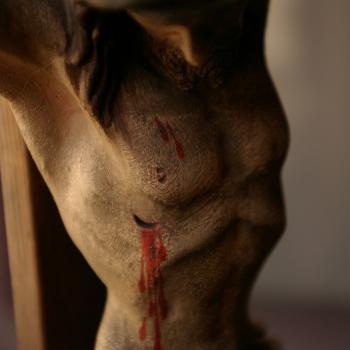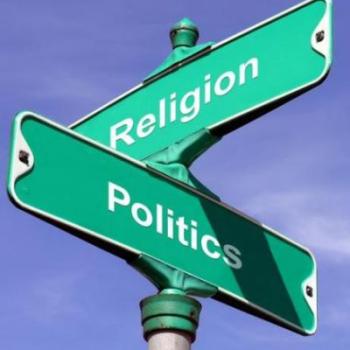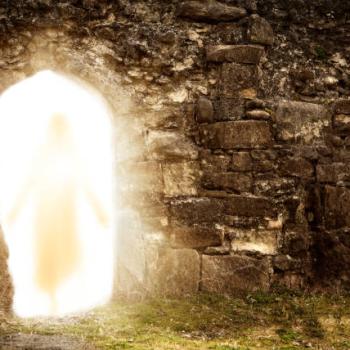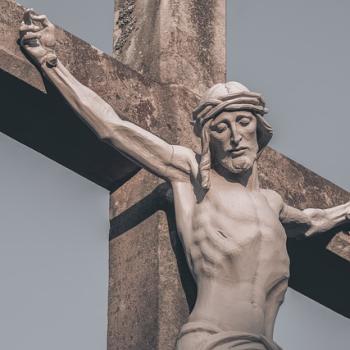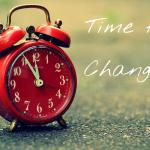
I don’t know what it’s like in your town, but in my town in rural Southern Minnesota, there’s less than theoretically pure separation of religion and the public realm. That separation, better, relationship, has been a theme in most of my posts for a while. But now’s Memorial Day, and a time for celebrating. If that celebrating includes praying outside of church, well, it’s not a time for worrying about political fine points.
Does everybody in town pray? Do they pray in more or less the same way if they do pray? Here in Southern Minnesota, it could be. But maybe not. Anyway, here we are at the VFW Memorial Day celebration, invoking God the Father at least twice. No one doubts it’s the natural thing to do.
This year rainy weather forces us inside, into the town’s nursing home. Normally, it would have been just outside the front door around the flag pole. Also because of the weather, we couldn’t have the 21-gun salute, so we had 21 seconds of silence with, actually, a few bonus seconds.
VFW liturgists
The liturgists of the Veterans of Foreign Wars have outlined a standard Memorial Day ceremony. That’s as it should be for a liturgy. Creativity is not the most important value.
We start with a flag raising. From inside we could see the flag raisers through the windows, but not the flag itself after it got a quarter of the way up. Perhaps that’s why it especially struck me when I saw the flag volunteers, in the rain, pulling on the rope until it stopped and then reverse direction for half that time before tying. I checked the protocol for flags on Memorial Day and found the following:
According to the Federal Flag Code, here are the guidelines: Traditionally, flags are flown from sunrise to sunset if displayed in public. … On Memorial Day, the flag should be flown at half staff from sunrise until noon, then raised briskly to the top of the staff until sunset in honor of the nation’s battle heroes.
We remained standing after the flag raising and said the Pledge of Allegiance. Liturgies need words that people hold in common. Fights over the words of the Pledge are irrelevant now. We say together the words we all know.
There were two prayers by the VFW Post chaplain and a speech that the Post Commander read. The latter had some touching moments, but I’m inclined to think it was not his own words. I didn’t ask because originality is not important. In fact, the best of the spoken parts is the same every year, and that tradition helps make it the best. We all know what’s coming; we know many of the words by heart. Two high school volunteers read “In Flanders Field” and “The Gettysburg Address.”
The symbols
Symbols are what make a liturgy. Religion could disappear and human beings would still be symbol-making creatures and would still put the symbols into celebrations, into liturgies—or cease to be human. In the final part of our ceremony, four Post members placed flowers on four crosses in a space in the middle of the people sitting or standing around. Four short invocations explained what the wreaths represented:
- A wreath of many-colored flowers represents truth;
- A spray of white flowers represents purity and unselfish courage;
- A spray of red flowers represents our devotion and everlasting remembrance;
- A spray of blue flowers represents eternity: we immortalize brave deeds.
I’m not sure I got all the colors and symbols exactly right. With the final placing of a flag, we paid our respects to departed comrades.
Then came the 21 silent seconds and taps and, for most of us who could travel, a potluck at a friendly garage, where we go to pray together one more time.
Image credit: The Milwaukee Independent via Google Images



